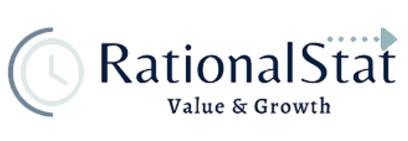
Wind turbine blades are made of composite materials, which are a combination of two or more materials with different properties. Composite materials are strong and lightweight, making them ideal for wind turbine blades. However, they can also be difficult to recycle.
The wind industry is growing rapidly, and with this growth comes the challenge of managing decommissioned wind turbines. It is estimated that by 2050, there will be over 43 million tons of wind turbine blade waste.
Recycling wind turbine blades is important for several reasons. First, it reduces the amount of waste that goes to landfills. Second, it conserves resources and reduces the need to extract new raw materials. Third, it reduces greenhouse gas emissions associated with the production of new materials.
There are a number of different technologies for recycling wind turbine blades. One common method is to shred the blades and then use the shredded material to make new products, such as cement, asphalt, and insulation. Another method is to use chemical solvents to break down the composite materials into their component parts.
The market for recyclable wind turbine blades is growing rapidly. In 2022, the global market for recyclable wind turbine blades was valued at US$ 2.3 billion, according to RationalStat. The market is expected to grow at a compound annual growth rate (CAGR) of 25.2% from 2023 to 2028.
Also, explore related insights on the Wind Catchers Market
Top stories around the globe
- Vestas develops new technology to recycle epoxy-based wind turbine blades. Vestas, a Danish wind turbine manufacturer, has developed a new chemical recycling process that can break down the epoxy resin in wind turbine blades into virgin-grade materials. The new process is expected to be commercialized in 2025.
- GE Renewable Energy partners with Veolia to recycle wind turbine blades. GE Renewable Energy, a division of General Electric, has partnered with Veolia, a French waste management company, to develop and deploy wind turbine blade recycling solutions. The two companies are working together to develop new recycling technologies and to build a network of recycling facilities around the world.
- The European Union launched a new initiative to boost the recycling of wind turbine blades. The European Commission has launched a new initiative, called the Circular Economy Action Plan for the Wind Energy Sector, to boost the recycling of wind turbine blades in the European Union. The initiative aims to increase the recycling rate of wind turbine blades from 20% to 80% by 2030.
Explore: Key Trends that Will Shape the Energy Sector in 2024
Challenges to accelerating the circularity of wind turbine blades
- Cost: Recycling wind turbine blades can be expensive. The cost of recycling can range from US$ 1,000 to US$ 5,000.
- Logistical challenges: Wind turbine blades are large and heavy, which can make it difficult and expensive to transport them to recycling facilities.
- Lack of regulation: There is no global standard for wind turbine blade recycling. This can make it difficult for wind turbine operators to find reputable recycling companies.
- Lack of demand: There is not yet a strong demand for recycled wind turbine blade materials. This is because the recycled materials are often more expensive than virgin materials.
Despite these challenges, there is a growing momentum towards accelerating the circularity of wind turbine blades. The wind industry is investing in new recycling technologies, and governments around the world are developing policies to support wind turbine blade recycling.
Ways to accelerate the circularity of wind turbine blades
- Develop new recycling technologies: New recycling technologies are needed to reduce the cost of recycling wind turbine blades and to make recycled materials more competitive with virgin materials.
- Build a network of recycling facilities: A network of recycling facilities is needed to make it easier and more affordable to recycle wind turbine blades.
- Develop global standards: Global standards for wind turbine blade recycling are needed to make it easier for wind turbine operators to find reputable recycling companies.
- Increase demand for recycled materials: Governments and businesses can help to increase demand for recycled wind turbine blade materials by setting procurement targets and by supporting the development of new products made from recycled materials.
Recycling Wind Turbine Blades for Long-term Sustainability
The recycling of wind turbine blades is essential for the long-term sustainability of the wind industry. By accelerating the circularity of wind turbine blades, we can reduce waste, conserve resources, and reduce greenhouse gas emissions.
To get more insights on the Global Wind Turbine Blade Recycling Market, take advantage of the market research report by RationalStat that can shape your decision into a well-informed decision. Request a free sample report.

Divyanshu Sharma
Co-founder and Director at RationalStat
Divyanshu is an experienced market research consultant. He helps growth-driven organizations and entrepreneurs understand market entry prospects, industry assessment, and grow their revenue strategically.







You must be logged in to post a comment.